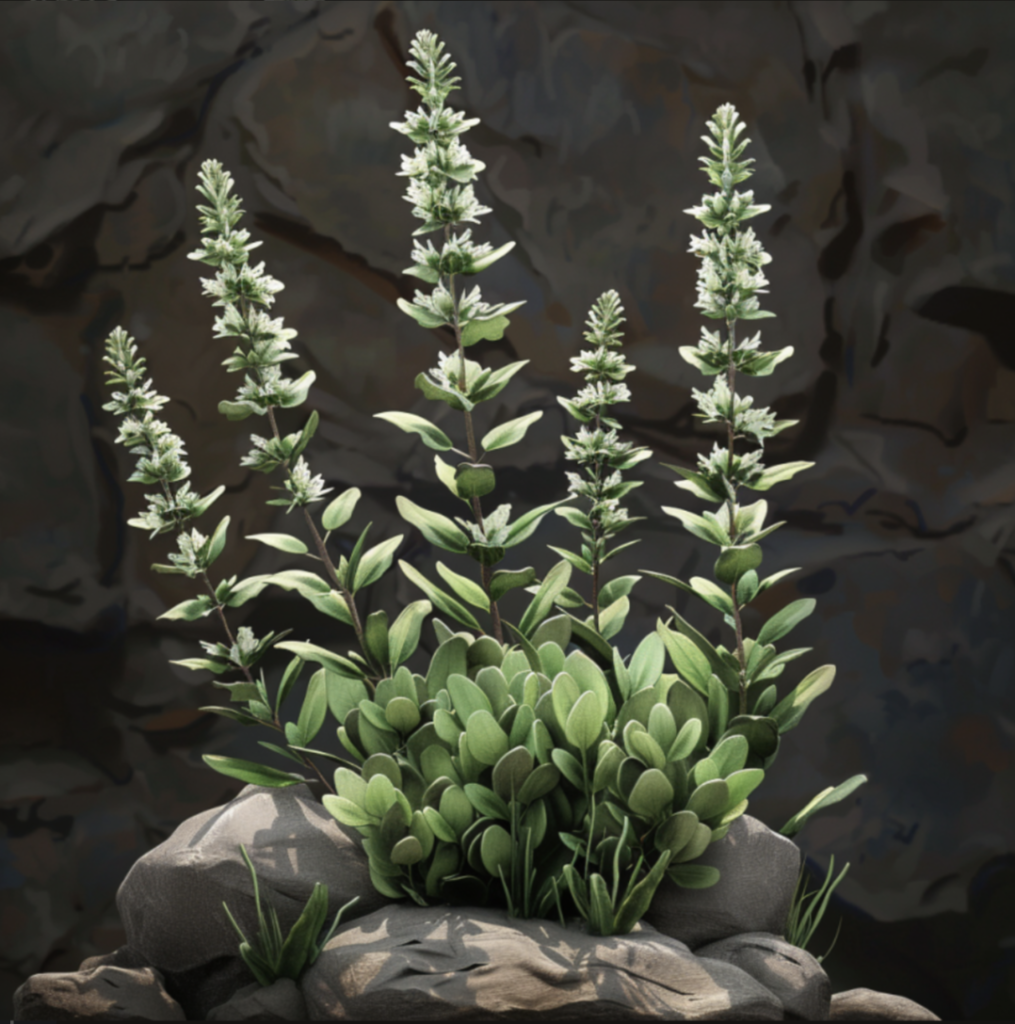
In the tapestry of the natural world, where every plant has a story, Ledum stands out as a beacon of healing and aromatic wonder. Known colloquially as wild rosemary, Labrador tea, or by its scientific moniker, Ledum palustre, this plant is a testament to nature’s ability to thrive in the harshest conditions and offer remedies to various ailments.
What is the Plant?
Ledum is a perennial, evergreen shrub belonging to the Ericaceae family, which thrives in the cold, boggy terrains of the northern hemisphere, including parts of North America, Europe, and Asia. It grows up to 50 cm tall, boasting narrow, leathery leaves that exude a potent, aromatic scent when crushed. The plant is easily recognizable by its small, white to pinkish flowers, which bloom in clusters and attract a plethora of pollinators during their flowering season.
The resilience of Ledum, thriving in nutrient-poor soils and cold climates, hints at its robust chemical makeup and the potent properties it harbors. This adaptability not only makes Ledum a fascinating subject of study but also a valuable resource in traditional and modern herbalism.
What are the Properties?
Ledum’s therapeutic properties stem from its rich composition of bioactive compounds, including essential oils, flavonoids, and tannins. The essential oil derived from Ledum is particularly prized, containing monoterpenes such as α-pinene, β-pinene, and limonene, which are known for their anti-inflammatory, antiseptic, and sedative effects.
The plant exhibits a wide array of pharmacological activities, including but not limited to, antimicrobial, antioxidant, and anti-inflammatory actions. Its ability to soothe irritated skin, repel insects, and support the respiratory system highlights its versatility as a natural remedy. Furthermore, Ledum has been researched for its hepatoprotective (liver-protecting) qualities, showcasing its potential in supporting liver health and detoxification processes.
What Naturists Say It Should Be Taken For
Naturists and herbalists have long championed Ledum for its myriad health benefits, advocating for its use in treating a variety of conditions. It is commonly recommended for:
- Respiratory Issues: Ledum is believed to aid in alleviating symptoms of coughs, colds, and bronchitis. Its expectorant properties help in loosening phlegm, thereby easing congestion and breathing difficulties.
- Skin Conditions: The antiseptic and anti-inflammatory properties of Ledum make it a natural choice for treating cuts, wounds, insect bites, and various skin irritations. It is said to promote healing and reduce infection risk.
- Joint and Muscle Pain: Ledum has been used to relieve the discomfort associated with rheumatism, arthritis, and muscle pains. Its analgesic properties help in soothing pain, while its anti-inflammatory action reduces swelling and stiffness.
- Digestive Health: Though less commonly, Ledum is also suggested for addressing minor digestive issues. Its tannin content can help in soothing upset stomachs and reducing inflammation in the digestive tract.
- Immune Support: The antioxidant properties of Ledum contribute to its role in supporting the immune system, helping the body to fend off infectious agents and reduce oxidative stress.
It’s important to note that while naturists advocate for the use of Ledum in these areas, individuals should consult with healthcare professionals before integrating it into their health regimen, particularly due to its potent nature and the potential for interactions with other medications.

How It Can Be Used
Ledum can be utilized in various forms, each suited to different applications and preferences. Some of the common methods include:
- Tea: A traditional and gentle way to enjoy Ledum’s benefits, particularly for respiratory and digestive health. Steeping the leaves in hot water releases the plant’s aromatic oils and compounds.
- Tincture: A concentrated form of Ledum, made by soaking the plant material in alcohol, can be used for more targeted therapeutic applications, including joint and muscle pain relief.
- Essential Oil: Distilled from the leaves, Ledum essential oil is potent and versatile. It can be used in aromatherapy, diluted in carrier oils for topical application, or added to baths for a relaxing and therapeutic experience.
- Ointments and Creams: For skin irritations, cuts, and bites, Ledum can be infused into ointments and creams. This application provides a direct, soothing effect on the skin, leveraging its antiseptic and anti-inflammatory properties.
Conclusion
Ledum, with its rich tapestry of properties and benefits, stands as a testament to nature’s bounty. tundras of the north emerges a plant that not only survives but thrives, offering a range of natural remedies. Whether through a soothing tea, a potent tincture, or a healing ointment, Ledum extends its ancient roots into modern wellness practices, reminding us of the enduring wisdom embedded in the natural world. As we explore and integrate these natural remedies, it’s crucial to do so with respect, caution, and an informed perspective, ensuring that the gifts of plants like Ledum are utilized sustainably and effectively.
